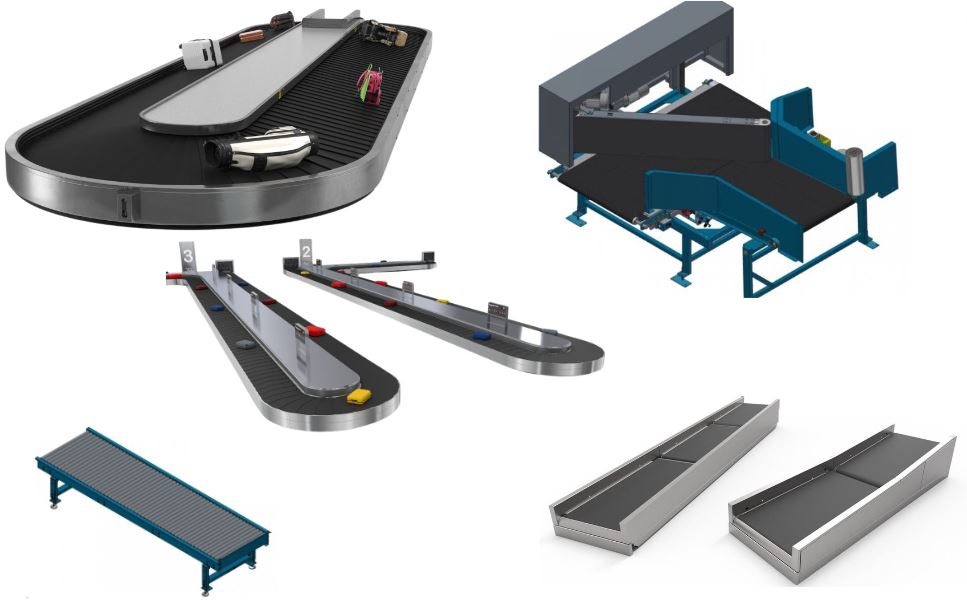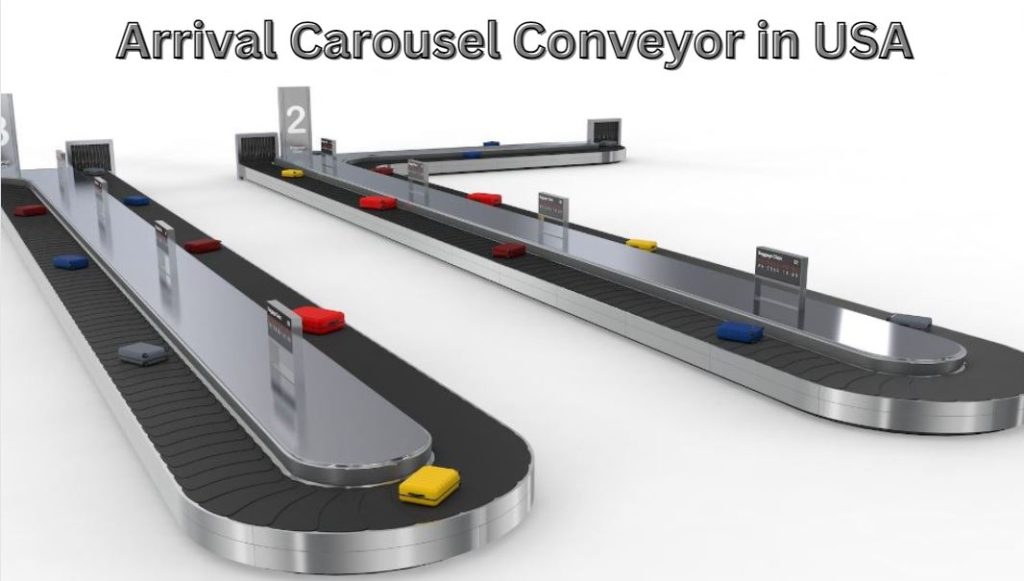Airport Baggage Handling Systems (BHS) in the USA in 2024
Baggage handling systems (BHS) play a crucial role in the smooth functioning of airports across the United States. From the moment travelers check in their luggage to the point of baggage claim, these intricate systems ensure that bags are efficiently transported, sorted, and delivered to their final destinations. In this comprehensive guide, we delve into the intricacies of BHS in the USA, exploring everything from its technology and components to maintenance and modernization efforts.

Evolution of Baggage Handling Systems
Baggage handling systems have come a long way since their inception. What started as manual processes involving manual sorting and loading has evolved into sophisticated automated systems driven by cutting-edge technology. Today, modern BHS in the USA boast advanced conveyor belt systems, automated sorting technology, and robust baggage tracking software, among other innovations.
Components of BHS
Conveyor Belt Systems: At the heart of every baggage handling system lies a network of conveyor belts that transport luggage throughout the airport. These belts come in various sizes and configurations, allowing for efficient movement of bags from check-in counters to sorting areas and eventually to the aircraft.
Sorting Technology: Advanced sorting technology, including tilt trays and sortation systems, plays a pivotal role in ensuring that bags are directed to the correct flights. These systems use a combination of barcode scanning, RFID technology, and artificial intelligence to identify and route each bag accurately.
Baggage Claim Systems: Upon arrival, travelers eagerly await the retrieval of their luggage at the baggage claim area. BHS in the USA utilize carousel systems and automated baggage delivery systems to streamline this process, minimizing wait times and enhancing passenger satisfaction.
Automated Baggage Handling
Automation is a key feature of modern BHS in the USA. Automated systems not only improve efficiency but also enhance security and reliability. By reducing the reliance on manual labor and human intervention, automated BHS minimize the risk of errors and ensure a seamless flow of baggage throughout the airport.
Baggage Security Screening: Ensuring the safety and security of passengers’ belongings is paramount in the aviation industry. BHS in the USA are equipped with state-of-the-art baggage security screening technology, including X-ray scanners and explosive detection systems, to detect and mitigate potential threats.
Baggage Tracking: Real-time baggage tracking has revolutionized the way airports manage luggage. By leveraging RFID tags and barcode scanning technology, airports can monitor the location of each bag throughout its journey, reducing the likelihood of mishandling or loss.
Modernization Efforts
As technology continues to advance, airports in the USA are investing in the modernization of their BHS to stay ahead of the curve. This includes upgrading outdated infrastructure, integrating new software solutions, and implementing innovative conveyor and sorting systems.
US BHS Technology: American manufacturers are at the forefront of BHS technology, developing cutting-edge solutions to meet the evolving needs of airports. From high-speed conveyor belts to intelligent sorting algorithms, US BHS technology is setting new standards for efficiency and reliability.
BHS Installation Companies in the USA: Several companies specialize in the design, installation, and maintenance of baggage handling systems in the USA. These companies work closely with airports to tailor solutions that optimize space, improve throughput, and enhance overall operational efficiency.

Improving Airport Logistics
Efficient baggage handling is essential for maintaining smooth airport operations and ensuring a positive passenger experience. By optimizing throughput rates, minimizing wait times, and adhering to IATA baggage standards, airports can streamline their logistics processes and reduce the risk of bottlenecks.
Throughput Rate: The throughput rate of a BHS refers to the number of bags processed per hour. By maximizing throughput rates, airports can handle larger volumes of luggage more efficiently, reducing congestion and delays during peak travel periods.
Baggage Reconciliation: Accurate baggage reconciliation is critical for ensuring that every bag is loaded onto the correct aircraft. BHS in the USA use advanced reconciliation algorithms and tracking systems to match each bag with its corresponding passenger and flight, minimizing the risk of errors.
Baggage Claim Wait Times: Long wait times at the baggage claim area can detract from the overall passenger experience. By optimizing BHS workflows and implementing efficient baggage delivery systems, airports can reduce wait times and improve passenger satisfaction.
Maintaining BHS Reliability
Regular maintenance is essential for keeping BHS in optimal working condition. This includes routine inspections, preventive maintenance measures, and timely repairs to address any issues that may arise.
BHS Maintenance: Dedicated maintenance teams are tasked with ensuring the reliability and performance of BHS in the USA. By conducting regular inspections and proactive maintenance activities, these teams can identify and address potential issues before they escalate, minimizing downtime and disruptions to airport operations.
Independent Carrier System (ICS): An ICS is a component of BHS that allows for the simultaneous handling of bags for multiple airlines. By segregating baggage based on airline or destination, airports can streamline sorting and loading processes, improving efficiency and reducing turnaround times.
Early Baggage Storage (EBS): EBS systems are used to temporarily store bags that arrive at the airport ahead of their scheduled flights. By storing bags in designated holding areas, airports can manage peak loads more effectively and ensure that bags are available for loading when needed.
All in All
In conclusion, baggage handling systems play a pivotal role in the efficient operation of airports across the USA. From check-in to baggage claim, these systems facilitate the seamless movement of luggage, ensuring that passengers’ belongings reach their destinations safely and on time. By embracing technological advancements, investing in modernization efforts, and prioritizing maintenance and reliability, airports can enhance the overall passenger experience and maintain their position as leaders in the aviation industry.
FAQs
What is a Baggage Handling System (BHS) in the USA?
A Baggage Handling System (BHS) in the USA is a complex network of conveyor belts, sorting technology, and automated systems designed to transport and manage luggage within airports. It ensures efficient handling of passenger baggage from check-in to baggage claim.
How do Baggage Handling Systems (BHS) in the USA improve airport operations?
Baggage Handling Systems (BHS) in the USA streamline airport operations by automating luggage handling processes, reducing manual labor, enhancing security screening, and minimizing baggage claim wait times. They play a crucial role in maintaining the overall efficiency and reliability of airport logistics.
What are some challenges associated with Baggage Handling Systems?
Challenges with Baggage Handling Systems (BHS) in the USA may include technological complexities, occasional system breakdowns, baggage mishandling, and the need for regular maintenance. Addressing these challenges requires ongoing investment in technology, infrastructure, and training to ensure smooth operations and passenger satisfaction.